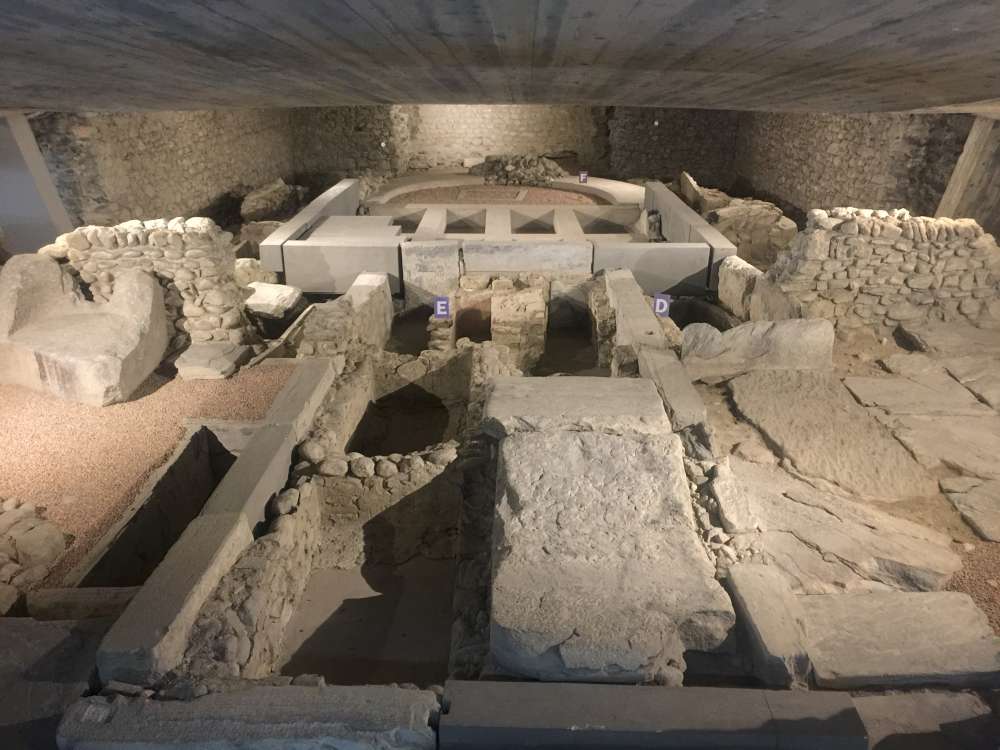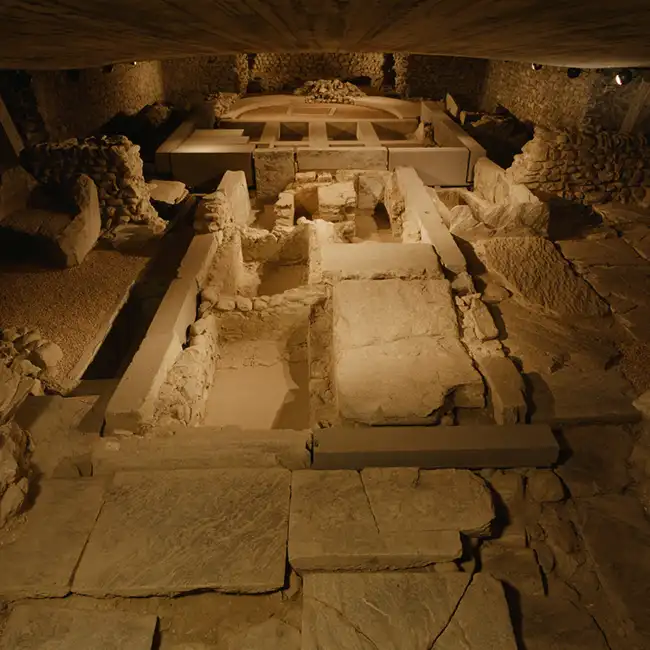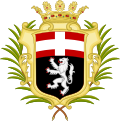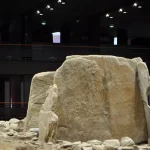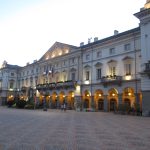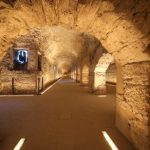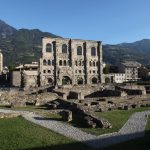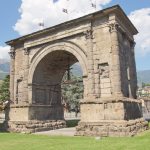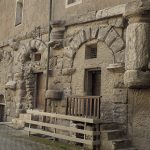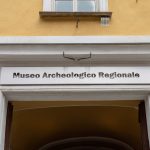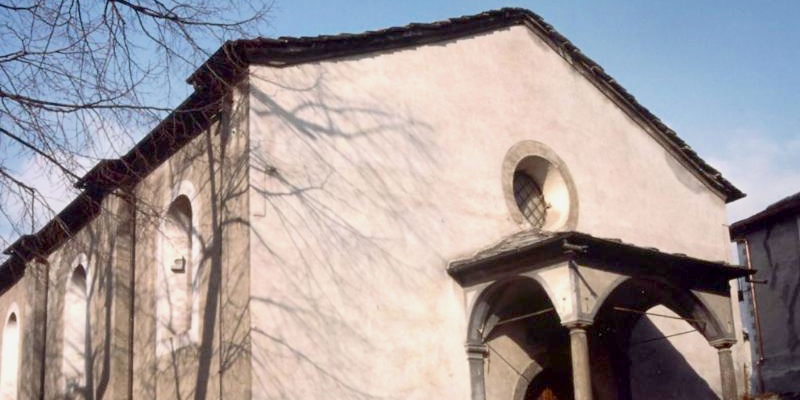
Aosta Church of St. Lawrence
History and Spirituality
The Church of San Lorenzo is one of the oldest and most valuable witnesses of Christian history in the Aosta Valley.
Located near the Porta Praetoria, the church houses underground the remains of an early Christian basilica from the 5th century, where the first bishops of the diocese and the faithful of the community were buried. The early Christian basilica of St. Lawrence The early Christian basilica had a Greek cross plan, with four apses and a central hall covered by a dome.
It was surrounded by a portico and a cemetery, where the tombstones of bishops Grato, Agnello and Gallo, patrons of the city, are located.
The basilica was destroyed in the 8th century by the Franks and replaced by a smaller church, which was enlarged and modified in later centuries. The church of San Lorenzo today The present church dates from the 17th century, when the prothyrum (part of the portal) was built and the orientation of the apse was changed.
It has a single nave with side chapels and a semicircular apse.
Inside there are some 18th-century frescoes and a 16th-century wooden statue of St. Lawrence.
The church is now deconsecrated and hosts exhibitions and cultural events related to mountains and the Alpine region.



Church of St. Lawrence The History
The Church of San Lorenzo is one of the oldest and most valuable witnesses of Christian history in the Aosta Valley.
Located near the Porta Praetoria, the church houses underground the remains of an early Christian basilica from the 5th century, where the first bishops of the diocese and the faithful of the community were buried.
The early Christian basilica of San Lorenzo
The early Christian basilica had a Greek cross plan, with four apses and a central hall covered by a dome.
It was surrounded by a portico and a cemetery, where the tombstones of bishops Grato, Agnello and Gallo, patrons of the city, are located.
The basilica was destroyed in the 8th century by the Franks and replaced by a smaller church, which was then enlarged and modified in later centuries. The church of San Lorenzo todayThe present church dates from the 17th century, when the prothyrum (a part of the portal) was built and the orientation of the apse was changed.
It has a single nave with side chapels and a semicircular apse.
Inside are some 18th-century frescoes and a 16th-century wooden statue of St. Lawrence.
The church is now deconsecrated and hosts exhibitions and cultural events related to mountains and the Alpine region.

Church of St. Lawrence
Chiesa Paleocristiana di San Lorenzo, Via Sant'Orso, Aosta, AO, Italia

Collegiate Church of St. Bear
Chiesa Collegiata dei Santi Pietro e Orso, Via Sant'Orso, Aosta, AO, Italia

Megalithic Area of Saint-Martin-de-Corléans
Area megalitica di Saint-Martin-de-Corléans, Corso Saint Martin de Corleans, Aosta, AO, Italia

Aosta Cathedral
Cattedrale di Santa Maria Assunta e San Giovanni Battista, Piazza Papa Giovanni XXIII, Aosta, AO, Italia

Cryptoportic Forensic
Criptoportico Forense, Piazza Papa Giovanni XXIII, Aosta, AO, Italia

Regional Archaeological Museum
Museo Archeologico Regionale, Piazza Pierre-Leonard Roncas, Aosta, AO, Italia

